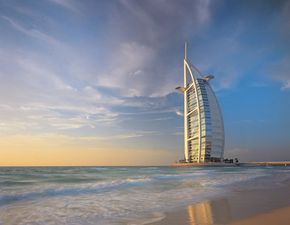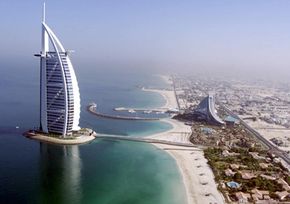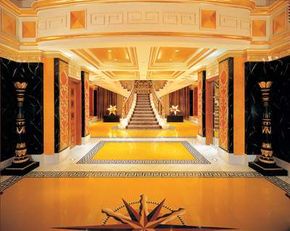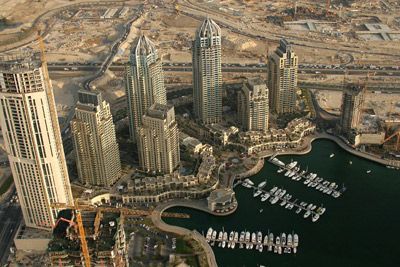A glistening glass yacht rises out of the Persian Gulf. It's the jewel of Dubai -- the tallest hotel in the world. Luxury cars ferry people across an ocean causeway to the hotel's own man-made island. Helicopters with VIP guests land on a suspended helipad, a disc hovering far above the sea. Fireballs burst at the entrance and a fountain shoots jets of water into the cavernous, gold-filled atrium. Ushers welcome guests with rose water, dates and coffee
while escorting them to two-story suites manned by personal butlers. Welcome to the Burj Al Arab -- Dubai's seven-star hotel.
Advertisement
Of course, the Burj Al Arab, which opened in 1999, is not really a seven-star hotel -- there's no such thing. There's not even a six-star rating. The property, run by the resort company Jumeirah, bills itself as a deluxe five-star, the highest existing hotel ranking. But the Burj's sheer opulence, coupled with its outrageously attentive service, has garnered the hotel a seven-star reputation.
Guests at the Burj look out of their floor-to-ceiling windows onto a city dotted with fantastical high-rises and countless cranes. Dubai, an emirate of the United Arab Emirates, has seemingly grown up overnight -- it was once a sandy bedouin town of pearl divers and fishermen, and, more recently, a drab and dusty oil state. Oil, in fact, is the force behind Dubai's race to become one of the world's great cities -- but not in the way you might expect. Dubai's oil is running out. It should be completely gone in the next 10 years. And with the source of its original wealth dwindling, Dubai's ruler, Sheik Mohammed bin Rashid al-Maktoum, has pushed his country into a more modern business: tourism.
In the next section we'll learn how the Burj Al Arab rose out of the Persian Gulf.
Advertisement



